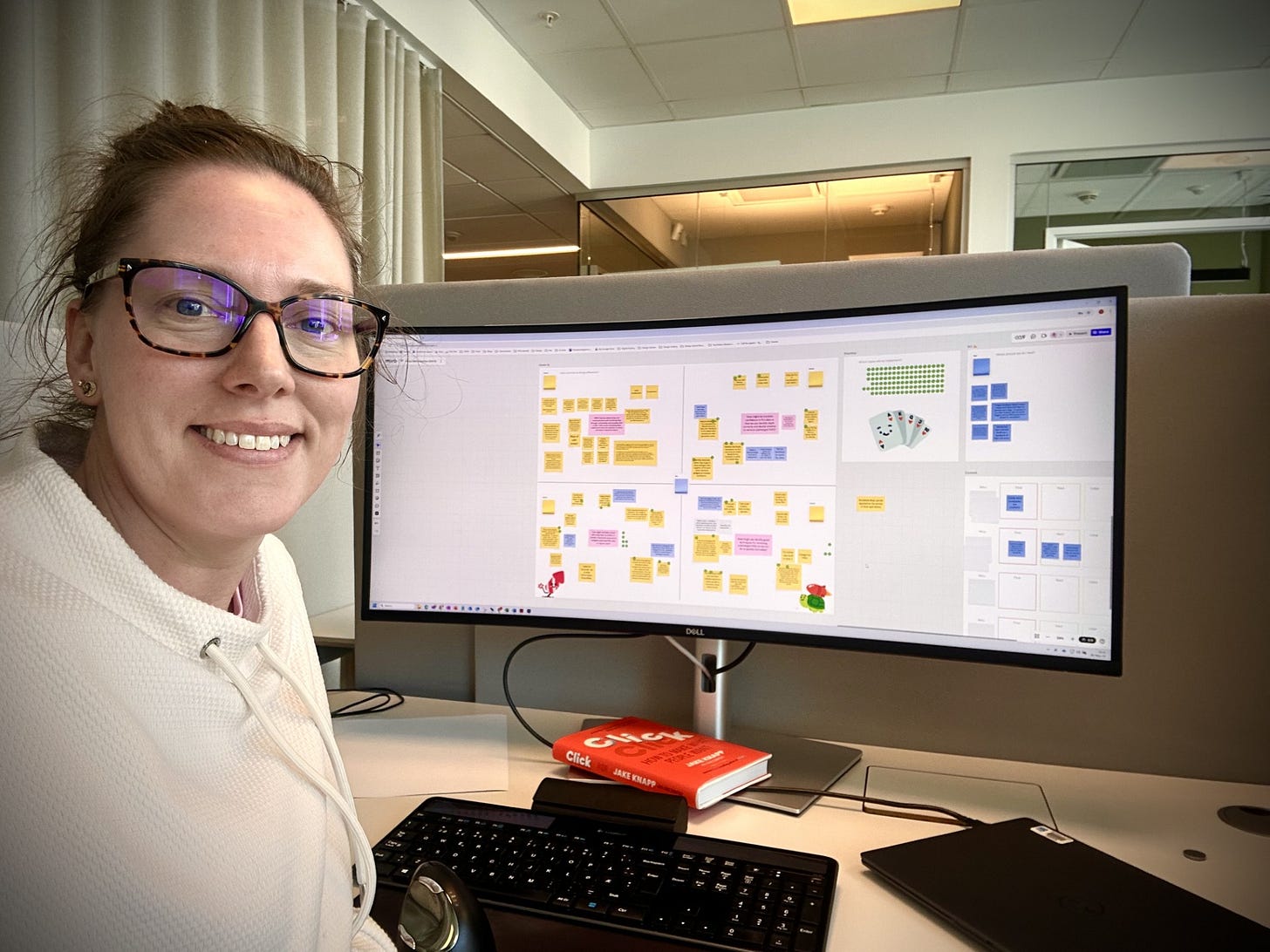How a Simple Retrospective Helped a High-Stakes B2B Team Gain Clarity, Ownership, and Momentum
A behind-the-scenes look at how a human-centered retrospective turned project pain into progress—and built real alignment in a high-risk, cross-functional B2B team.
When Projects Go Sideways—Why a Human-Centered Retrospective Can Be a Game-Changer
When a colleague mentioned that a recent project had gone terribly wrong, my first instinct was: “How can I help?”
I'm not an engineer, a client liaison, or a seismic project manager. But I am a design thinking facilitator who specializes in human centered approach to team alignment, and collaborative problem-solving in complex B2B environments.
So I offered to run a retrospective workshop—and that changed everything.
The Foot Is Already in the Door
The stakes are always high in industries where project risk, operational delays, and cross-disciplinary complexity are the norm. But the advantage of working in-house as a workshop facilitator is proximity—I can bump into the right people at the kitchenette.
In this case, that was the Projects Director, someone I’d worked with before during a Design Sprint. He already knew my approach and had seen how structured collaboration can turn abstract problems into clear, team-owned actions.
Converting the Sceptics (It Happens Often)
At the end of nearly every workshop I run, someone confesses how skeptical they were going in. They always follow that with something very positive like, "but, that was really valuable." And that’s when I know we’re onto something—especially in high-stakes B2B teams that crave alignment but rarely have space for structured reflection.
Making the Pitch
The kitchenette conversation went something like:
“I heard about project XYZ—sounds like it was rough. I think I could help. A retrospective would help you align the team and take action. I’ll outline my thoughts in an email.”
And then, a simple follow-up email:
Sample Email to the Director of Projects
Hi [Director of Projects],
As mentioned, I can run a retrospective workshop for project XYZ.
It’s a 2.5-hour session for up to 16 participants (min. 3), using visual thinking similar to the design sprint in its' method.
I recommend involving all key roles—those you want to buy in to whatever changes result from the session.
Here’s the agenda:
Identify what went well (to keep the room inclusive and constructive)
Capture pain points and cluster them by theme
Reframe top challenges into “How Might We” statements
Generate, share, and combine possible solutions
Prioritize and commit to actions with ownership
Let me know if this format works for you.
Thanks,
Kat
From Workshop Offer to Actionable Results
After a positive response, we expanded the prep with a third colleague and dove into the situation in more depth:
What happened (timeline, players, complexities)?
What did it cost (time, money, reputation)?
What’s the value metric for solving this (risk reduction)?
Who should be involved (cross-departmental, no more or less than needed)?
Despite juggling seven time zones, we locked in a time and I built a Miro board.
The Workshop Day
We're on Teams. A participant cancels last minute. I walk through the Miro board with the team anyway, which helps everyone see the preparation and intent. It’s enough to trigger buy-in and reschedule with stronger participation.
When we finally run the session, the 2.5 hours fly:
Clear articulation of the problem across departments
Prioritization based on value and feasibility
Real accountability for next steps
We agreed to book a follow-up session to explore what was still unresolved. That additional 2-hour block led to a clear action list, full of volunteered ownership, and an agreement for a check-in weeks later.

Why Documentation Matters
A simple list of actions isn’t enough. I always write a short, structured report. It’s not just for the team—it’s for me too. It becomes the reference point ahead of check-ins and future decisions.
Included in the report, I outline three types of value:
Problem Value: What went wrong and what it cost—time, assets, reputation
Solution Value: What risk we reduced, what results we expect
Bonus Value: How team collaboration improved, how alignment grew
This bonus value became more apparent earlier this week when the goal posts moved…
And Then… A New Project Emerges
At our recent check-in, a sales lead cautiously mentions another project coming down the pipeline—with a similar risk profile. Suddenly, all the actions we agreed on carry real urgency.
This is why I do what I do. Structured workshops, visual thinking, and design-led retrospectives help B2B teams work through pain, align faster, and move forward with purpose. The job keeps going, holding people to account and ensuring the solution value is realized. We've scheduled another check-in and I will follow-up individually as the time pressure for actions is real.
The Real Role of the Facilitator
Here’s the thing: the facilitator’s mindset is key.
You must be:
Curious, not directive
Neutral, not judgmental
Willing to ask the “dumb” questions
Sometimes, it’s those very questions that move the team from talk to tangible action.
Top Tip
This retrospective didn’t just fix a broken project. It built trust, fostered collaboration, and created a shared playbook for facing future challenges.
What I notice about this process is the absolute necessity to remain neutral, curious, and even naive. If you're a team leader ask the "dumb" questions, dig and unravel - most of all, make sure it's coming from a place of curiosity and kindness.


Really interesting read Kat, well done, it is not the easiest topic to write about.